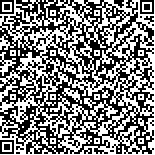| 本文已被:浏览 1985次 下载 1504次 |

码上扫一扫! |
| 前庭康复训练对原发性良性阵发性位置性眩晕患者复位后残余症状的疗效分析 |
| 李斐,陈瑛,高博,严静宇,周晓闻,顾欢欢,杨化兰,庄建华*,王国权* |
|
|
(第二军医大学长征医院神经内科, 上海 200003
*通信作者) |
|
| 摘要: |
| 目的 探讨早期前庭康复训练对原发性良性阵发性位置性眩晕(BPPV)复位成功后残余症状的疗效。方法 纳入2016年3月至12月就诊于第二军医大学长征医院神经内科的原发性BPPV且复位成功的100例患者,将其中复位24 h后仍存在残余症状的38例随机分为前庭康复训练组及对照组,各19例。对照组患者未接受特殊处理,前庭康复训练组接受Cawthorne-Cooksey前庭康复训练,两组均随访4周,每周由神经科医师进行1次随访,行眩晕残障问卷(DHI)量表评估患者疗效。结果 两组患者随访1~4周的DHI评分较复位后24 h评分均有好转(P均<0.05)。复位后24 h及第1周随访时两组间DHI评分差异均无统计学意义(P=0.609、P=0.627),第2~4周随访时前庭康复训练组DHI评分均低于对照组(P均<0.05)。结论 复位后早期给予前庭康复训练可有效缓解BPPV复位后的残余症状,降低功能残障发生率。 |
| 关键词: 良性阵发性位置性眩晕 残留头晕 前庭康复 眩晕残障问卷 |
| DOI:10.16781/j.0258-879x.2017.11.1370 |
| 投稿时间:2017-06-04修订日期:2017-09-16 |
| 基金项目: |
|
| Effect of vestibular rehabilitation on residual dizziness after successful canalith repositioning maneuvers in patients with benign paroxysmal positional vertigo |
| LI Fei,CHEN Ying,GAO Bo,YAN Jing-yu,ZHOU Xiao-wen,GU Huan-huan,YANG Hua-lan,ZHUANG Jian-hua*,WANG Guo-quan* |
(Department of Neurology, Changzheng Hospital, Second Military Medical University, Shanghai 200003, China
*Corresponding authors) |
| Abstract: |
| Objective To investigate the efficiency of early vestibular rehabilitation in managing residual dizziness after successful canalith repositioning maneuver in patients with benign paroxysmal positional vertigo. Methods A total of 100 patients with primary benign paroxysmal positional vertigo were enrolled after successful canalith repositioning in Department of Neurology, Changzheng Hospital of Second Military Medical University from March to December of 2016. There were 38 cases had residual dizziness 24 hours after successful canalith repositioning maneuvers, and they were divided into vestibular rehabilitation group to receive Cawthorne-Cooksey vestibular rehabilitation training and control group without special treatment. All patients were followed up by neurologists once a week for 4 weeks. The Dizziness Handicap Inventory (DHI) scale was used to evaluate the efficiency of vestibular rehabilitation. Results The DHI scores of patients in the two groups were significantly improved at 1-4 weeks of follow-up (all P<0.05). There were no significant differences in DHI scores between the two groups immediately after canalith repositioning maneuvers (P=0.609) or at 1 week of follow-up (P=0.627). The DHI scores in the vestibular rehabilitation group were significantly lower than those in the control group at 2-4 weeks of follow-up (all P<0.05). Conclusion Early vestibular rehabilitation can relieve residual dizziness and reduce the incidence of functional disability after successful canalith repositioning maneuvers in patients with benign paroxysmal positional vertigo. |
| Key words: benign paroxysmal positional vertigo residual dizziness vestibular rehabilitation Dizziness Handicap Inventory |
.jpg)
.jpg)